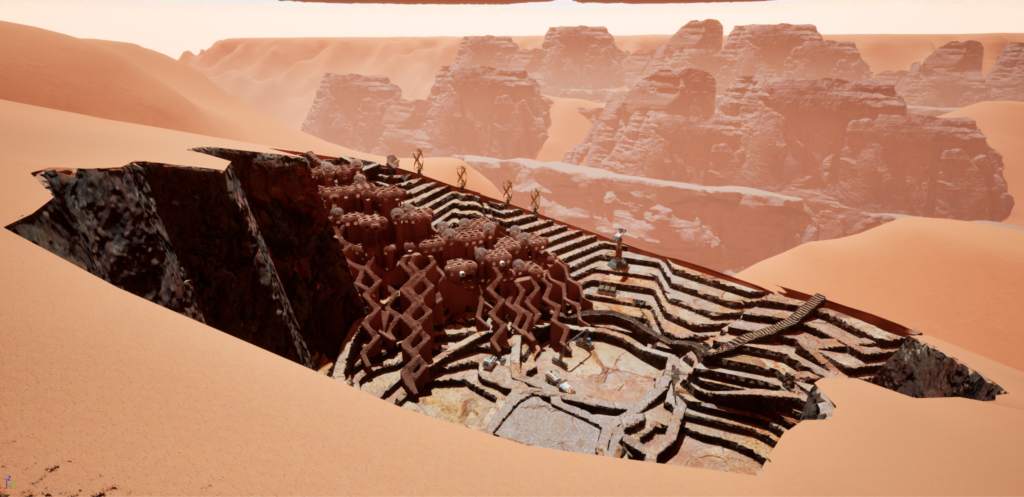Concept
The main concept of our project was to design a scalable and adaptive Mars colony system focused on mining, residential, and recreation functions. This combination would ensure that our project would be a cohesive habitat for the Martian miners.

Our approach
In our system, we decided to go with open pit mining as our mining method and create our habitat topology with inflatable elevational modules with an additional 3D printed regolith layer for radiation protection.

How the system works?
Our project starts with generating minerals for the larger site and choosing the optimal place for our project.

In the selected spot we generate and optimize our pit which would be a base for our aggregation.

Based on the mineral configuration we then generate a mining strategy and access paths.
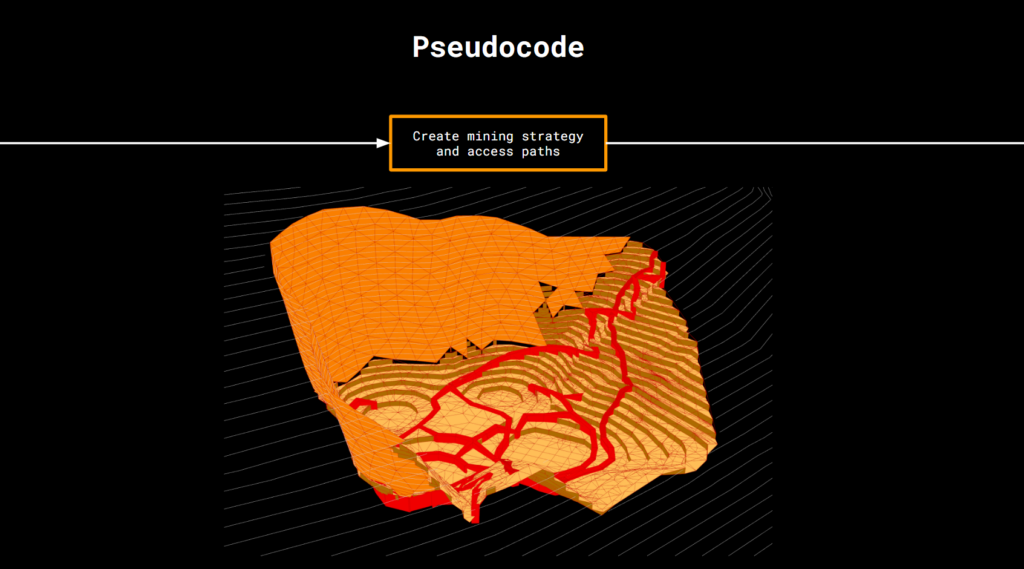
After that, we create our modules and generate a habitat aggregation.

Finally, we add a protective 3D-printed regolith layer to our colony.
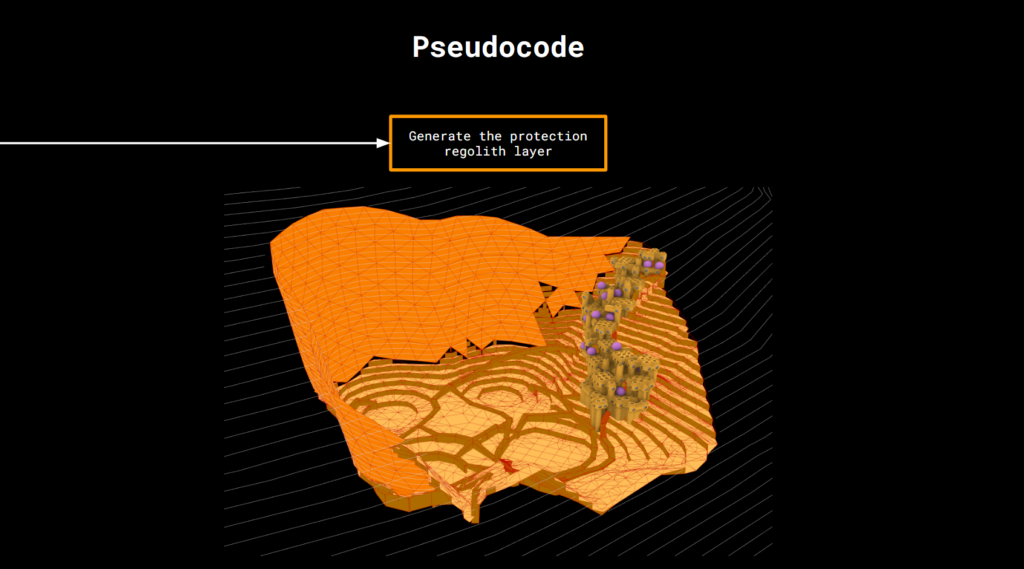
Creating the mines
Although at first we wanted to also add tunnel mining to our system, in the end, we managed to focus only on open pit mining. For that, we generated several minerals on our common site and performed an optimization to choose the best location for our colony.
Creating the modules
Regarding the architecture of our colony, we have three basic module types that the whole habitat will be based on – expendable cubes, expendable bubbles, and flexible corridors.
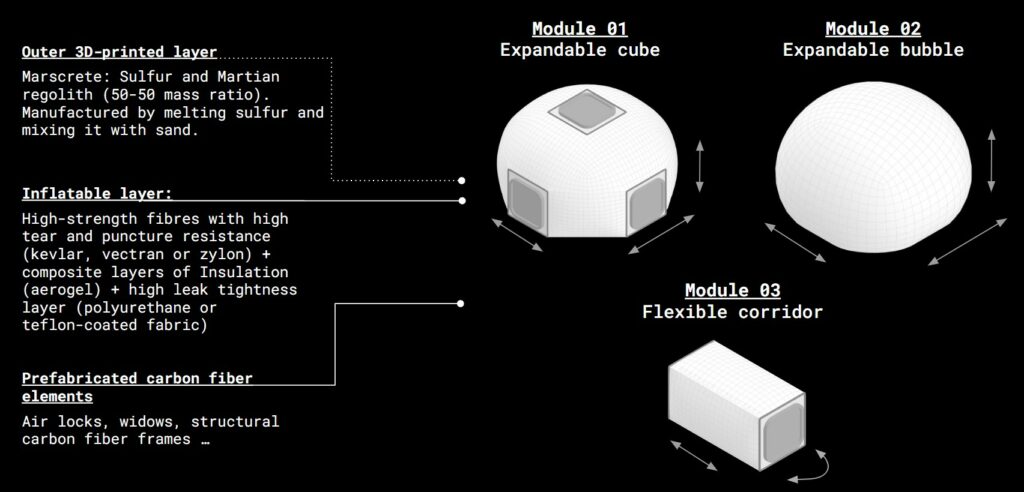
Spatial program
Regarding the habitat space configuration, we decided to split our colony of 50 people into 10 groups of 5 people to maximize efficiency.
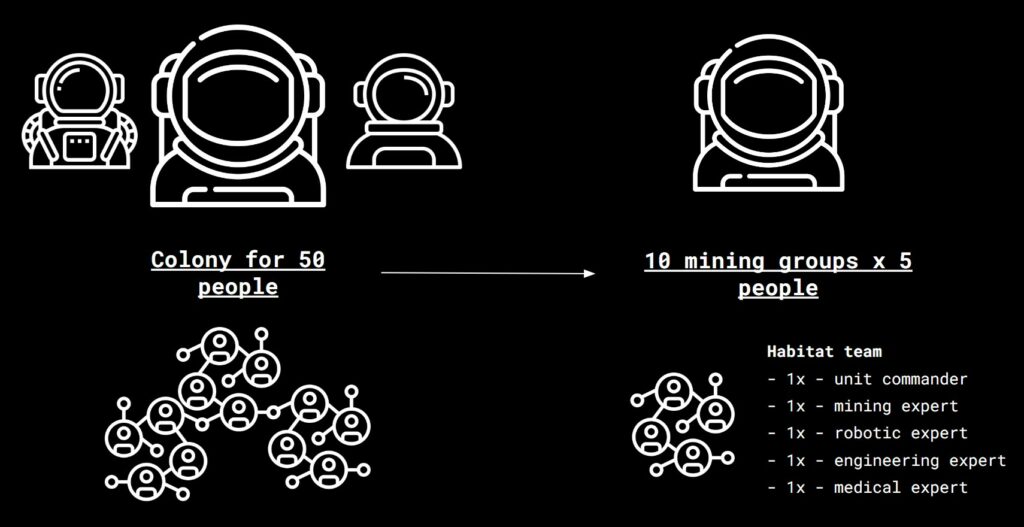
The program of the whole habitat is divided into 5 types of spaces – mining, residential, common, recreation, and transfer. Each type has its own specific rooms. Combining the modules that we talked about before, and the program we created allowed us to combine it into different types of clusters that would be the building blocks for the colony (along with the transfer modules)
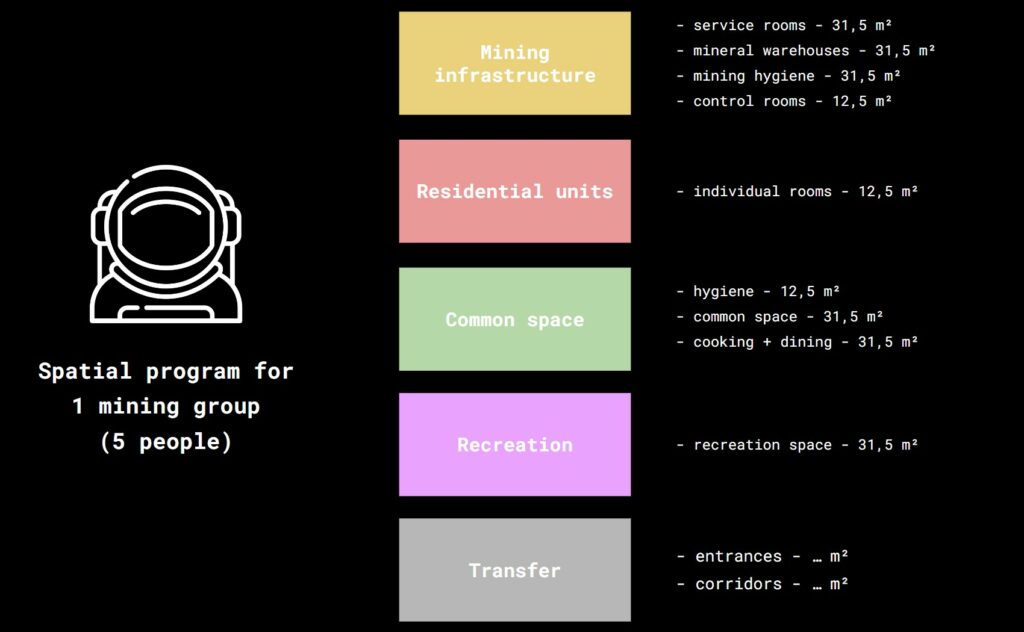

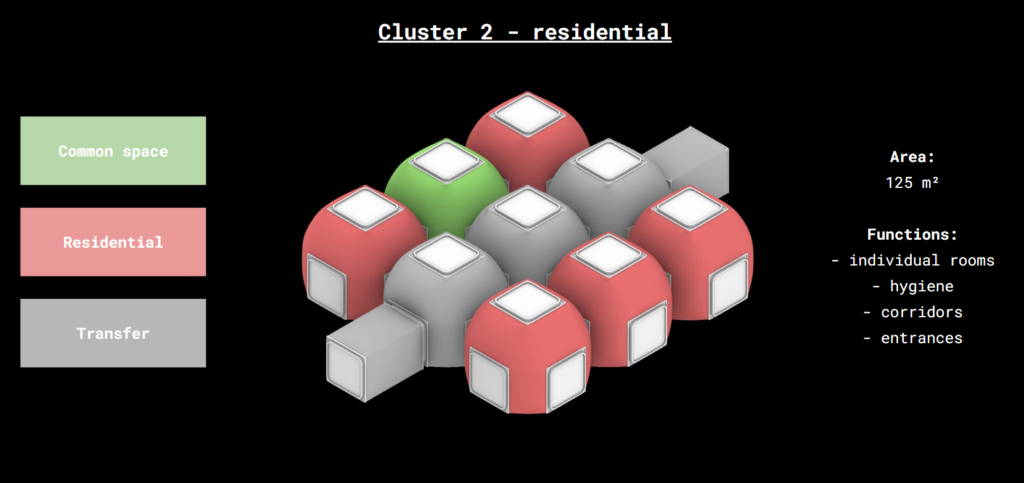

Creating the habitat form
Our selected configuration method for the habitat was a geometric aggregation. We wanted to achieve several fitness objectives such as a minimum number of of transfer clusters and minimal distance between different types of clusters.

We tested several options to see how the aggregations are performing regarding different parameters.
In the end, we selected this configuration and added a 3D printed regolith layer on top of it.

System overview
Here is a summary animation of our system and how it’s performing.
Collaboration
Part of the challenge was the collaboration. We used different techniques to work together smoothly and control our data throughout the whole process. Our main platform to exchange data was Speckle. We used different subbranches to save specific parts of our geometry, and we connected our scripts to always pull or push this data back for each step.
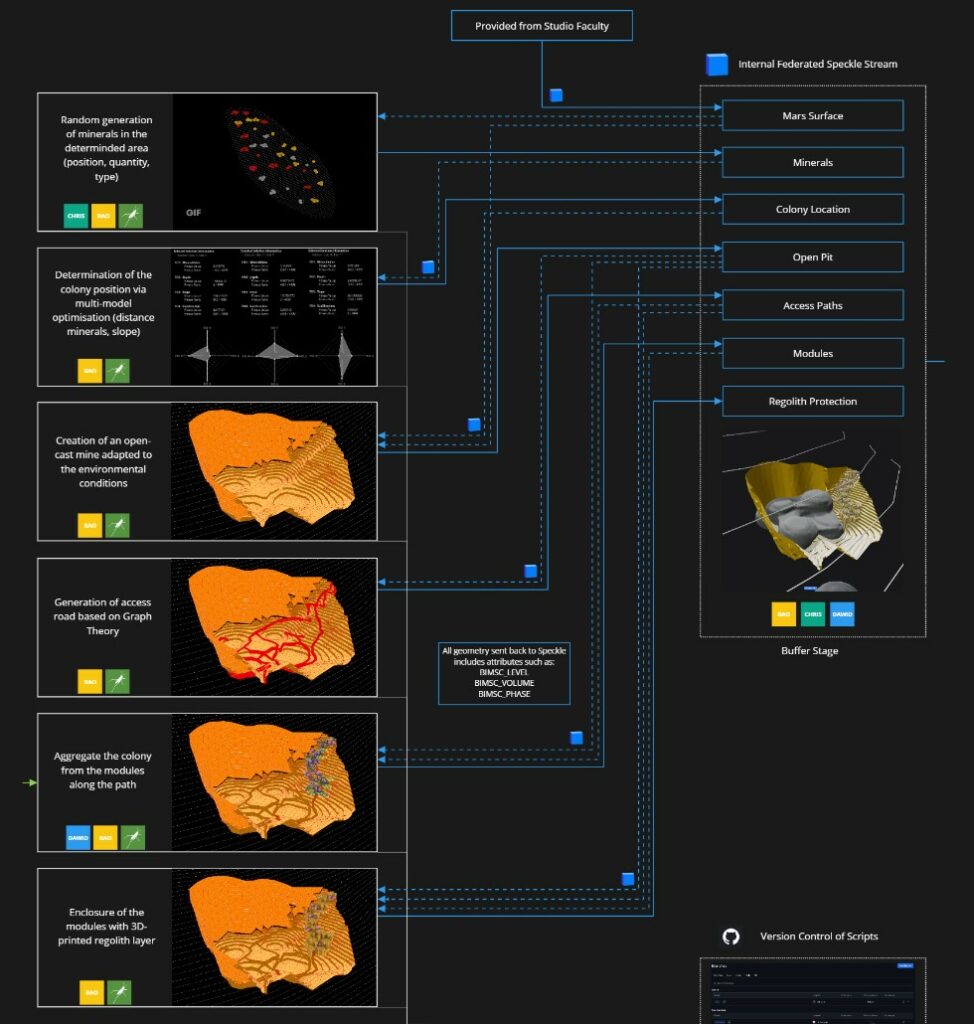
Data management
Here is an example of how viewing data and geometry worked in our common Speckle environment.
Final output
The final step was visualizing our project in Unreal Engine with a few perspective shots and a video.

